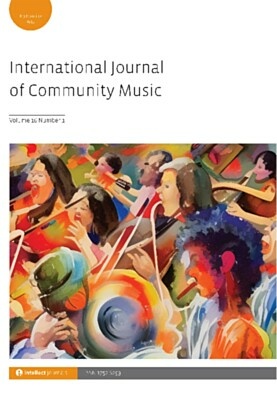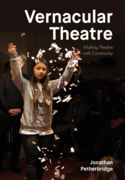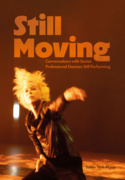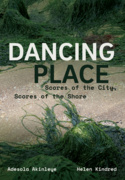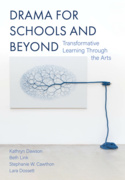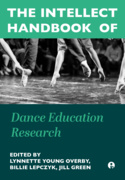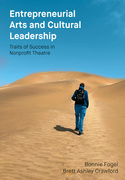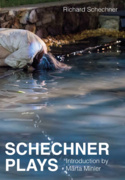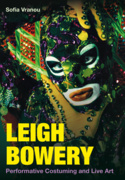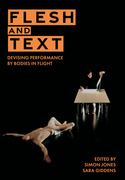General Call for Papers
Journal contributors will receive a free PDF copy of their final work upon publication. Print copies of the journal may also be purchased by contributors at half price.
Guidelines for Authors:
-
All manuscripts submitted should be original work and must not be under consideration by other publications.
-
Manuscripts should be submitted via the journal website using the 'submit' button.
-
IJCM is a COPE member. Authors are expected to disclose conflicts of interest (direct or potential) and adhere to ethical standards of publication. Ethics protocol approvals must be supplied to the editors upon request.
-
IJCM is a blind-refereed journal. Strict anonymity is accorded to both authors and referees. Be sure to redact self-identifying passages or references prior to submission.
-
The journal uses standard British English. The Editors reserve the right to alter usage to these ends.
-
Manuscripts should not normally exceed 7,000 words (including references).
-
Intellect offers an open access option. Authors interested in open access publication should the Intellect Journals Manager, Amy Rollason (amy.r@intellectbooks.com)
Submit the manuscript as a Word document or in Rich Text format. The text should be in 12-point font, double-spaced, with 2.5 cm margins. Do not use justification (i.e. right alignment) or spacing between paragraphs. Please include:
- a title;
- a 150–200 word abstract;
- up to 8 keywords.
Place these items at the beginning of your file, with the headings 'Abstract' and 'Keywords'.
If the submission is accepted, you will need to provide an ORCIDiD: a unique, career-long identification number for an author. If you do not yet have an ORCID, please register at https://orcid.org/register.
References and citations should be formatted according to the journal’s modified Harvard house style.
- In-text citation examples:
… reflected in personal enjoyment and fulfillment (Tsugawa 2009; Kuntz 2012).
...'your everyday self' (Rankin 2008: 234).
- Journal article in reference list:
Southcott, Jane and Joseph, Dawn (2013), 'Community, commitment, and the Ten Commandments: Singing in the Coro Furlan', International Journal of Community Music, 6:1, pp. 79–92.
- Authored book in reference list:
Schippers, Huib (2010), Facing the Music: Shaping Music from a Global Perspective, New York: Oxford University Press.
- Chapter in an edited book in reference list:
Veblen, Kari K. (2013), 'The tapestry: Introducing community music', in K. K. Veblen, S. J. Messenger, M. Silverman and D. J. Elliott (eds), Community Music Today, Plymouth: Roman & Littlefield Education, pp. 1–12.
- Use commas, not full stops, between parts of a reference item.
- References to journal articles should include DOI numbers prefaced by https://doi.org/, or provide a durable URL. For all online sources, please provide the date of access.
Quotations should use single inverted commas. Material quoted within cited text should be in double inverted commas. Quotations should be within the body of the text unless they exceed 30 words. In this case, they should be separated from the body of the text and block indented.
Articles may be accompanied by images. It is the author’s responsibility to supply images and ensure they are copyright cleared. Images should be scanned at 300 dpi resolution and saved as tiff, png or jpg files. Do not insert images into a word document. Please ensure you insert a figure number at the appropriate position in the text, together with a caption and acknowledgement to the copyright holder or source.
Tables and graphs should be supplied in their original, editable format for the purposes of copy-editing and screen-reader accessibility. Table captions should appear above the table, numbered sequentially, with a descriptive caption, ending with a full stop (period). Do not use footnotes in the caption.
Table 1: This is an example of a table.
Figure captions should appear below the figure (image, graph), numbered sequentially, with a descriptive caption, ending with a full stop (period). Do not use footnotes in the caption.
Figure 1: This is an example of a figure.
For detailed descriptions on style matters, see the Intellect Style Guide.
Special Issue Call for Papers
Special Issue: ‘First Peoples’ Perspectives’
This special issue is a collaboration between the International Journal of Community Music (IJCM) and the International Society for Music Education (ISME) Special Interest Group, Decolonising and Indigenising Music Education (DIME). Fundamental to the mission of the DIME group is the meaningful inclusion of Indigenous Peoples’ voices and approaches for change at the intersection of music and education. This special edition aims to advance discourse within the field of community music by inviting First Peoples, Indigenous and/or First Nations authors to share their distinct and unique perspectives on community music.
Linda Tuhiwai Smith (1999:115) describes how First Peoples, Indigenous and/or First Nations collective groups are united by shared kinship and identity with a ‘consciousness of distinct peoples and a political will to exist as distinct peoples’. These distinctions indicate shared territories, histories, languages, cultures and beliefs (Smith 1999) and further, the centrality of relationships within their families and wider kin groups. These groups often view the world through an intergenerational lens alongside their ancestors and future generations, and beside their non-human relations, which are interrelated throughout all parts of life and knowledge forming (Burgess and Koroi 2024, Champagne 2015, Evans 2021). Colonisation disrupted the deeply interconnected relationships of First Peoples, Indigenous and/or First Nations communities, creating further layers to the stories of their communities and their knowledge forms (Smith 1999). These stories include their distinct musical knowledge (Haami 2024). This special issue opens a critical discussion within the field of community music, creating a space for First Peoples, Indigenous and/or First Nations’ perspectives on community music.
Topics of interest and gentle provocations for this special issue
We welcome submissions that explore, but are not limited to:
- First Peoples’ conceptualisations of community music
- The distinct nature and experience of First Peoples-led community musics
- Community music and the wellbeing of First Peoples
- Community music and healing Intergenerational Trauma
- Intergenerational First Peoples’ community music practices and their effects
- Connections between First Peoples’ musics and the more than human community-environment
- Interdisciplinary projects that relate community music stories through the lens of community health professionals, dancers, artists, creative arts therapists, and community educators
- Benefits and complexities of promoting intercultural connections and community through First Peoples-led community music activities
- Connections between First Peoples’ community music and First Peoples’ languages
- Colonial dichotomies between community and commercial music
- Hybridising musics, the value of popular music genres working alongside traditional community musical practices to promote language revival, and restoration of cultural protocols
- First Peoples’ community music, political activism, and environmental challenges
Prospective contributors are also free to suggest their own topic. The guest editors will consider any community music theme that authors feel will directly benefit their community and our community of scholars.
Expected standards for submission to this special issue
Many Indigenous scholars and thought leaders have raised concerns over research practices with Indigenous communities. Many have also proposed decolonising and culturally secure solutions. The guest editors expect a culturally appropriate standard of research to be met by all authors. To assist with this transparency, all contributors are asked to respond to the following guiding questions and expectations in their manuscripts:
- How did you conduct your research and why?
- How did you follow Indigenous research standards specific to your local community or nation?
- Whose shoulders are you standing on to pursue this community work?
- What were the challenges for First Peoples researchers engaging with Western-based research practices, institutions and/or funding bodies?
- Describe your creative solutions to research obstacles.
- Describe the Indigenous knowledge gathering practices and methodologies that support your project, eg. thoughts-based wananga, Indigenist, transformative, anti-colonial, and sovereign research.
- Describe your culturally-secure ethical consent processes.
- How was intellectual and cultural property cared for?
- What else did you do?
Important Dates
Submission Deadline: 16 June 2025
Notification of Acceptance: 31 July 2025
Final Manuscript Due: October 2025
Publication Date: January 2026
Submission Guidelines
We encourage submissions that facilitate first-person storytelling. These include but are not limited to:
- Works presented through images, short songs, or other non-linguistic creative formats
- Knowledge presented through conventional research reporting formats
- Short stories, poems, essays and think pieces (https://www.tckpublishing.com/think-pieces/).
Manuscripts and other creative objects should be submitted via the IJCM Submission Portal Link on the journal’s website.
Authors Guidelines can be found on the IJCM General Call for Papers webpage. Formatting should adhere to the journal’s guidelines found here (https://www.intellectbooks.com/international-journal-of-community-music).
Peer Review Process
All submissions will undergo a rigorous double-blind peer review process to ensure high-quality contributions. This special edition will draw on the DIME International Steering group, and current Indigenous group members for peer review.
Guest Editors
Professor Naomi Sunderland (Wiradjuri), Associate Professor Te Oti Rakena (Ngāpuhi, Ngāti Ruanui, Kāi Tahu) and Dr Meri Haami (Te Āti Haunui-a-Pāpārangi, Ngati Rangi, Ngaa Rauru Kiitahi, Ngāti Tūwharetoa, Southeast Asian) are Indigenous scholars and active practitioners and researchers within the field of music education, community health, ethnomusicology and community music. For this IJCM special edition, they draw on their experiences in the field and their extensive local and global networks to ensure appropriate protocols are enacted to share First Peoples’ stories.
Contact Information
For queries, please contact:
Name: Te Oti Rakena
Email: t.rakena@auckland.ac.nz
Please share this call and encourage your colleagues and collaborators to submit abstracts.
References
Burgess, H. & Koroi, H. (2024), ‘Intergenerational intimacies: A Whakapapa conceptualisation of Kai’, Toi Tangata, viewed January 15, 2025 <https://toitangata.co.nz/wp-content/uploads/2024/01/Intergenerational-Intimacies-final.pdf>
Champagne, D. (2015), ‘Centering Indigenous nations within Indigenous methodologies’, Wicazo Sa Review, 30:1 pp. 57–81.
Evans, J. (2021), ‘Can men weave baskets in queer country?’, in E. Lee and J. Evans (eds), Indigenous Women’s Voices: 20 years on from Linda Tuhiwai Smith’s Decolonizing Methodologies, Bloomsbury Academic, pp. 33-52.
Cabag, Y. (n.d.), ‘Think pieces: What they are and how to write one’, TCK Publishing.com, viewed December 18, 2024 <https://tckpublishing.com/think-pieces/>
Haami, M. (2024), ‘He Whiringa Wainuku: A weaving of Māori genealogies in land, water, and memory’, Genealogy, 8:3, p. 80.
Smith, L.T. (1999), Decolonizing Methodologies: Research and Indigenous Peoples, Zed Books.

